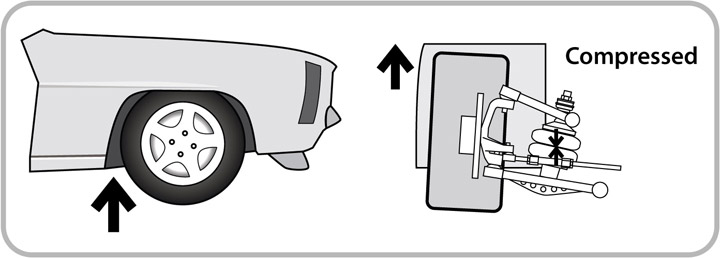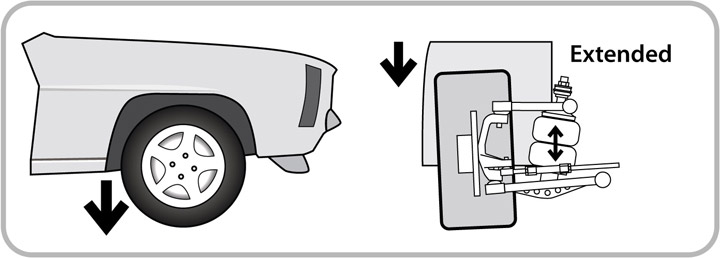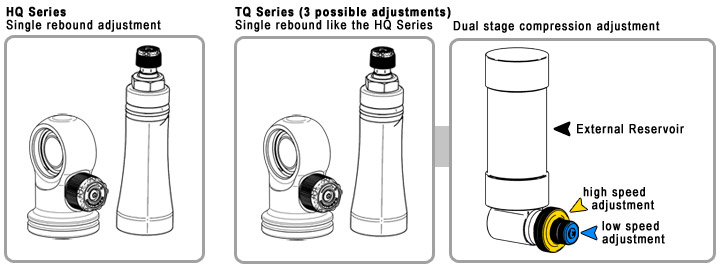Shock Tuning Quick Guide
Step 1. Understanding “compression” and “rebound”
Compression is when the suspension compresses. This occurs when you hit a bump in the road. The bump forces the wheel/tire/suspension assembly to “compress” or move upwards into the car.

Rebound is the opposite…when the wheel/tire/suspension assembly falls into a pothole, or simply “rebounds” from being compressed.

Step 2. How to turn the knob[s] on the shocks to control these forces
Counterclockwise = SOFTER Clockwise = FIRMER

Step 3. Where the knobs are

Step 4-a. How to set your initial rebound adjustment [on the HQ Series rebound adjustable units AND the TQ Series triple adjustable units]
- Set the adjustment knob fully firm [clockwise]
- Then back off the adjustment knob by 10 clicks. This is approximately the middle of the adjustment range. [note: You may be able to count more clicks through the adjustment range, but the last 4-5 clicks toward “soft” are so insignificant to the valving that we do not consider them effective or repeatable. That is why we use full firm as the starting point.]
- Drive the car.
- If the ride quality is harsh you may consider softening the rear shocks.
- If the front end is bouncy, you may consider stiffening the front shocks.
- We recommend that you experiment with the entire range of shock adjustment so you are aware of the wide range of influence that these shocks have on ride quality and handling performance.
Step 4-b. How to set your initial compression adjustments [on the TQ Series triple adjustable units]
- Set both the high speed and low speed compression adjustment knobs to full firm [clockwise]
- Turn the low speed compression adjustment [inner knob] counterclockwise [softer] by 10 clicks for a front shock and 15 clicks for a rear shock. [note: You may be able to count more clicks through the adjustment range, but the last 4-5 clicks toward “soft” are so insignificant to the valving that we do not consider them effective or repeatable. That is why we use full firm as the starting point.]
- Turn the high speed compression adjuster [outer ring] counterclockwise [softer] by 15 clicks for a front shock and 20 clicks for a rear shock. [yes, this very soft high speed compression adjustment is intended for best ride quality]
- Drive the car.
- If the ride quality is harsh you may consider softening the low speed compression adjustment.
- If the general ride quality and handling performance is good, but you still experience a harsh ride or even bottoming out on speed bumps or potholes, you may consider softening the high speed compression adjustment. The high speed compression adjustment will influence the events where shock piston velocity may exceed 20 in/sec. It will have only a minimal effect on the low speed circuits that influence general handling and ride quality.
Don’t be afraid to explore the full range of shock adjustments available. This is what you’ve paid for! You cannot hurt anything by turning these knobs…you can always go back.
You will find these GENERAL RULES to apply:
- The rear shocks have the most influence on ride quality. [because you sit closer to the rear end than the front end]
- The front shocks will usually have a much firmer setting all around than the rear because the front shocks “see” twice the weight [due to being mounted approximately halfway between the pivot point and the load point of the control arm].
- The front shocks will generally need 3-4 clicks of adjustment change in any direction to be felt.
- The rear shocks generally need 2 clicks of adjustment change in any direction to be felt.

